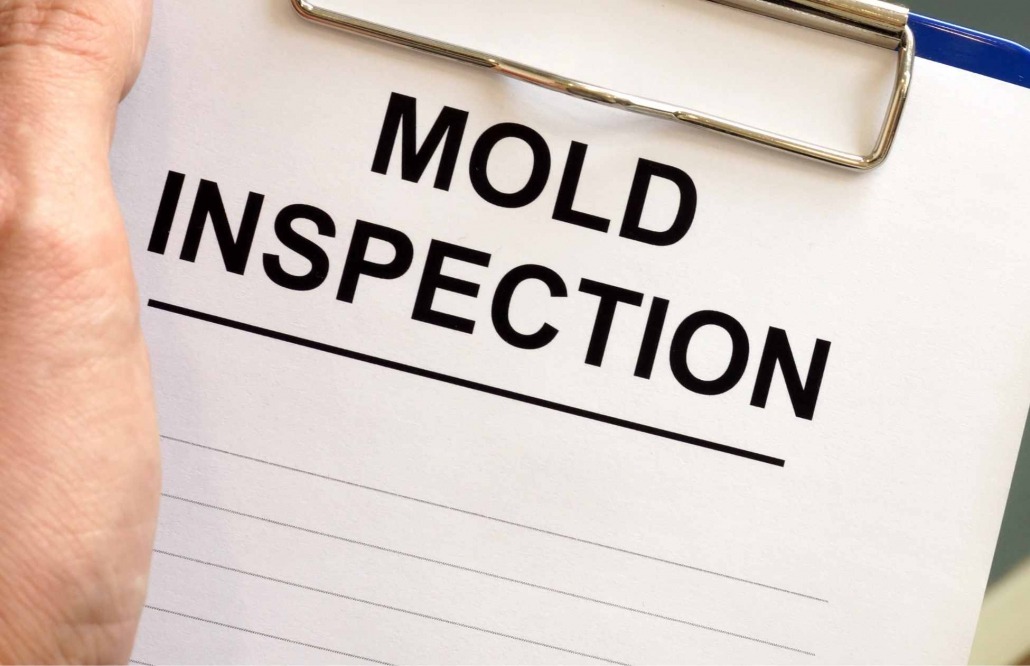How to Prevent and Remove Mold from Your Front-Load Washer
APP Expert / Wednesday June 7, 2023
Are you tired of dealing with the mold that accumulates in your front-load washer? It can be a real nuisance and make laundry day more of a chore than it needs to be. Whether you’re dealing with a musty smell, discolored clothing, or want to prevent mold from building up, learning how to remove and prevent it is key.
Fortunately, there are a few simple steps you can take to get rid of the mold and prevent it from coming back. With a few small changes to your routine, you can ensure that your washer stays clean and fresh for months to come.
So if you’re ready to take control of your laundry routine, this article is here to help. We’ll walk you through everything you need to know so that you can finally have a pleasant laundry experience again.
Understanding The Problem

Dealing with a moldy smell emanating from your washing machine can be a real headache. From detergent residue to water temperature, there are many potential causes of washer mildew. To address this problem, it helps to understand the common causes of mold buildup in front-load washers.
To prevent and address any mold-related problems in your front-load washer, it’s vital to know how to tackle each potential cause. Without further ado, let’s explore some practical solutions to combat mold buildup in your appliance.
Causes Of Mold Buildup
To keep your front-load washer free from mold, it’s crucial to address various factors that contribute to its growth. By understanding these causes, you can effectively prevent and clean mold buildup in your machine.
Detergent
One significant factor is the improper use of detergent. Using the wrong amount or type of detergent for your washer model can leave behind residue that attracts moisture and promotes mold growth. It’s essential to use the appropriate detergent in the correct quantity to minimize mold risk.
Not Letting the Washer Dry
Constantly washing loads of laundry without allowing the machine to dry out adequately between cycles can be another cause of mold. This can lead to increased moisture within the washer, especially if the area lacks proper ventilation. Insufficient ventilation also raises humidity levels, providing a favorable environment for mildew and mold to thrive.
Cold Water
It’s important to note that using only colder water during wash cycles can exacerbate the problem. Hotter water can not only improve dirt removal, but it can also help eliminate bacteria and mold growth in the washing machine.
By addressing these causes and implementing preventive measures, you can effectively combat mold in your front-load washer and maintain a clean and odor-free laundry experience.
Are There Any Health Risks Associated With Washing Machine Mold?
Mold in your washing machine is more than just an eyesore—it can be a health risk if left untreated. But what are the potential health risks associated with washing machine mold?
First off, mold spores from the washer can become airborne and be inhaled, leading to respiratory issues like congestion and coughing. Inhaling these spores can also trigger an allergic reaction or exacerbate existing allergies and asthma. Additionally, contact with mold can cause skin reactions such as rashes or hives.
Fortunately, there are several chemical-free ways to prevent and remove mold from your front load washer.
We’ll cover proactive steps to prevent mold and how to clean it once it’s there. These tips will help ensure you maintain a clean, safe environment for yourself and your family.

Cleaning And Prevention Tips
Now that we’ve explored the causes of mold buildup in front-load washers and the potential health risks, let’s delve into some valuable tips for cleaning and preventing mildew and mold growth. With a few simple steps, you can maintain a smoothly running washing machine that remains free from unwanted mold.
First and foremost, ensure you’re using the appropriate detergent type and amount for your washer model. This prevents residue buildup that could attract moisture and increase the likelihood of mold growth. Additionally, opt for hot water when washing your clothes. It not only helps eliminate bacteria lingering in fabrics but also enhances cleaning efficiency.
Next, prioritize proper ventilation around your washer, allowing it to fully dry between cycles. Adequate airflow reduces internal dampness and minimizes overall humidity levels in the surrounding area, diminishing the favorable conditions for mold growth.
Furthermore, here’s a four-step maintenance routine to follow regularly:
- After each cycle, gently wipe down the inside drum of the washer.
- Keep the door ajar when the washer is not in use.
- Address visible mold or mildew promptly using a suitable cleaner.
- Regularly inspect hoses for any signs of wear or damage.
By incorporating these cleaning and prevention tips into your routine, you’ll effectively keep mold at bay and ensure your front-load washer remains in top condition for years to come.
DIY Solutions
If you’re looking for a DIY solution to mold and mildew in your front-load washer, there are several DIY solutions that can help you get the job done without breaking the bank. Here is what you should do:
Cleaning
Start by cleaning the affected area with a mixture of one part bleach or vinegar and four parts water (for safety reasons, never mix bleach and vinegar!). Be sure to use protective gloves when handling this solution as it can be harsh on skin and eyes. Use a soft cloth or brush to scrub away any visible signs of mold growth and rinse off the solution with hot water.
Drying
Once all areas have been cleaned, make sure that they are dried thoroughly before closing up your machine. Leaving wet spots in your washer can encourage more mold growth, so make sure everything is dry before closing the door. You may also want to leave the door open after each cycle to allow for better ventilation and drying out time.
Prevention
Finally, take measures to prevent mold from returning by using designated cleaners for front-load washers, as well as regularly monitoring temperature levels around the machine and maintaining proper ventilation in the area where it’s located. Additionally, clean out any lint traps or filters routinely so that moisture doesn’t have an opportunity to build up over time.
For more in-depth information on what chemicals to use to clean your whole laundry room, check out our article. By taking these steps, you’ll be able to keep mold under control while keeping your machine running smoothly and safely in the long run.

How Often Should I Clean My Front Load Washer?
Maintaining a clean front-load washer is an important part of keeping your home healthy and hygienic. It’s important to regularly clean your washing machine in order to prevent mold growth and keep it running efficiently. But how often should you be cleaning your front-load washer?
Your washing machine should be cleaned at least once a month, or even more frequently if you’re using it heavily. To begin the cleaning process, run an empty cycle with hot water and a cup of baking soda or white vinegar (not both). This will help remove any dirt and grime that has accumulated over time. You should also periodically check for any lint or debris that may have built up in the drain filter, and make sure to clean it out when needed.
In addition to monthly cleaning cycles, there are a few other things you can do to ensure your front-load washer stays in tip-top shape. Cleaning the rubber seal around the door regularly can help prevent mold growth, as well as wiping down the outside of the machine after each use. Also, be sure to use high efficiency (HE) detergent as this helps prevent excess soap from building up in your machine over time.
Check out our full article on how to deep clean your washing machine for more tips. By following these simple steps, you’ll be able to keep your front-load washer clean and running smoothly for years to come!
Is There An Easy Way To Identify Mold In My Front Load Washer?
Identifying mold in your front load washer may seem challenging, but there are simple steps you can take to determine if it’s present. If you’ve noticed an unpleasant smell emanating from your washer and suspect mold, here’s how you can identify it easily.
Begin by opening up your washing machine and conducting a thorough inspection. Pay close attention to areas such as the rubber seal, inside the door, and any other dark or damp spots. Look for dark spots or slimy build-up, as they could indicate the presence of mold. Additionally, check for a musty smell or discoloration on your clothes after they’ve been washed.
To effectively remove washer mold and prevent its return, it’s crucial to identify the source of the moisture responsible for its growth. Ensure that the seals around your machine are intact and not allowing water to enter from external sources. Lastly, running a cycle with bleach can help eliminate lingering germs or bacteria that contribute to the problem.
By following these steps regularly, you can promptly and effectively address any potential mold issues in your front-load washer. This proactive approach ensures clean clothes without the worry of unpleasant odors or health risks associated with washing machine mold.
Conclusion
When those sneaky signs of mildew or mold growth start creeping in, swift action is essential. Washing machine mold is no joke and can pose health risks. But fear not! You have a range of options at your disposal. From natural remedies that are kind to the environment, to effective chemical-free solutions, you can choose the approach that suits you best. And if things get out of hand, don’t hesitate to call in the pros for some expert assistance.
Remember, the key is being proactive. Show your front load washer the care it deserves, and it will reward you with reliable performance and peace of mind. Say goodbye to worries about washing machine mold and say hello to fresh, clean laundry. And hey, for more handy tips and resources on appliance maintenance, make sure to visit the helpful folks over at AppliancePartsPros.com. We’ve got your back!
Hi! I’m Matt H., and I’m thrilled to be your guide through the world of appliance repair with over 25 years of invaluable experience in the industry.
From the early days of my career, I have been deeply passionate about appliances and their inner workings. Over the years, I’ve seen it all – from vintage models to the latest cutting-edge technology – and I’ve dedicated myself to mastering the art of repair. With a toolbox in one hand and a wealth of knowledge in the other, I’ve tackled every challenge that has come my way, learning and growing with each repair.
Join me as we dive into the intricacies of appliance repair. From step-by-step repair guides to explanations of common problems and their solutions, I’ll be here to simplify the repair process and empower you with the knowledge you need to keep your appliances running smoothly.
Feel free to explore our blog, ask questions, and leave comments – this platform is a space for learning, sharing, and growing together. Let’s work together to ensure that your appliances continue to serve you for years to come.
Thank you for joining me on this journey, and I look forward to being your go-to resource for all things related to appliance repair!









Leave a Reply
Want to join the discussion?Feel free to contribute!